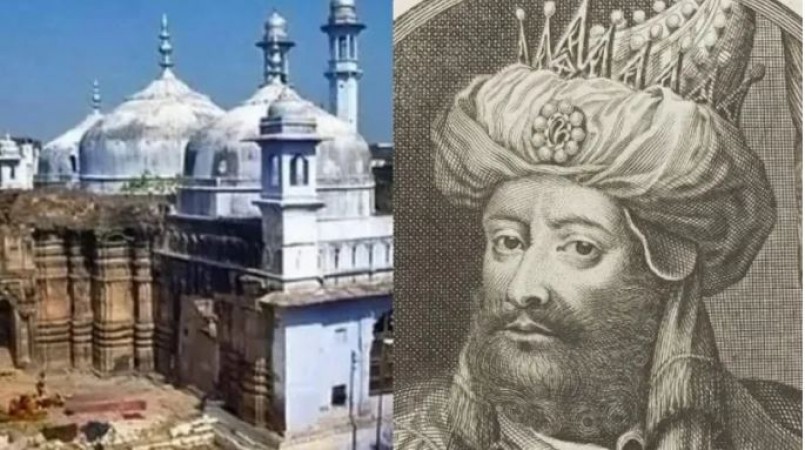
Varanasi: In the annals of history, the year 1669 marked a somber incident that left an indelible scar on the cultural fabric of India. It was during this time that the revered Temple of Vishwanath, nestled in the sacred town of Kashi (Banaras), met its tragic fate. The pages of history narrate how, under the command of Emperor Aurangzeb, the temple was reduced to ruins, forever altering the landscape of religious sanctity.
According to historical records, the Maasir-i-'Alamgiri, to be precise, it was reported that the officers acting on the Emperor's decree carried out the demolition of the Vishwanath Temple. The year was 1669 A.D., a period when religious tolerance and coexistence were strained under the weight of intolerance and aggression.
Kashi, known as one of the holiest towns in India, has a profound history of Shiva worship as Vishveshvara. Its sanctity has been revered since ancient times, and every corner of Kashi Kshetra is believed to hold the sanctity of a pilgrimage site. The deity Lord Vishvanatha, the protector of Kashi, has been venerated for ages, and pilgrims sought divine blessings by bathing in the holy Ganges before witnessing the deity's darshana (view).
The demolition of the Vishwanath Temple not only shattered the physical structure of the shrine but also cast a shadow on the rich tapestry of India's religious diversity. In the wake of this destruction, a mosque was erected, which stands to this day as a testament to the Hindus' remarkable tolerance and spirit of forgiveness. This act of building a mosque on the ruins of a temple reflects the complexities of history, showcasing how "mutually uncongenial cultures" intertwined in the same geographical space could lead to profound calamities.
Tragedy and sorrow aside, fragments of the demolished temple's sculpture remain, preserving echoes of Aurangzeb's act of vandalism and barbarity. These remnants serve as silent witnesses to a dark chapter in history, reminding us of the price paid by cultural heritage in the face of unchecked power.
As we explore history's annals, it's intriguing to note that this tale holds relevance even today. The ongoing Gyanvapi Case in court rekindles conversations around religious tolerance, heritage preservation, and the complex interplay of faith and history. The legacy of the Vishwanath Temple's destruction reminds us of the significance of safeguarding cultural heritage, promoting mutual respect, and embracing diversity in a world that constantly grapples with its past while forging its future.
Paths to Independence: Subhash Chandra Bose and Mahatma Gandhi's Vision for India
Formation of the Azad Hind Government and Views of Gandhi and Nehru